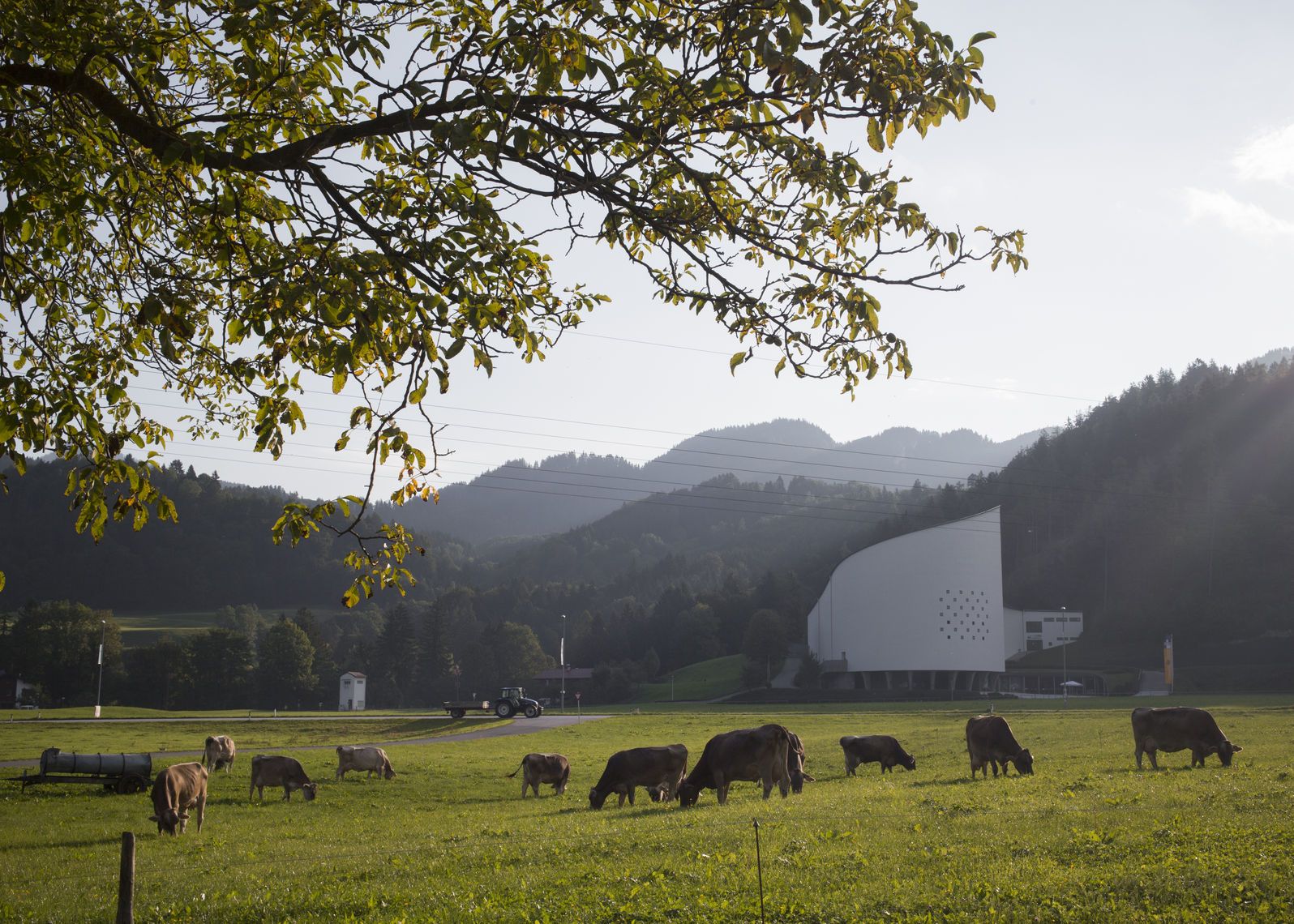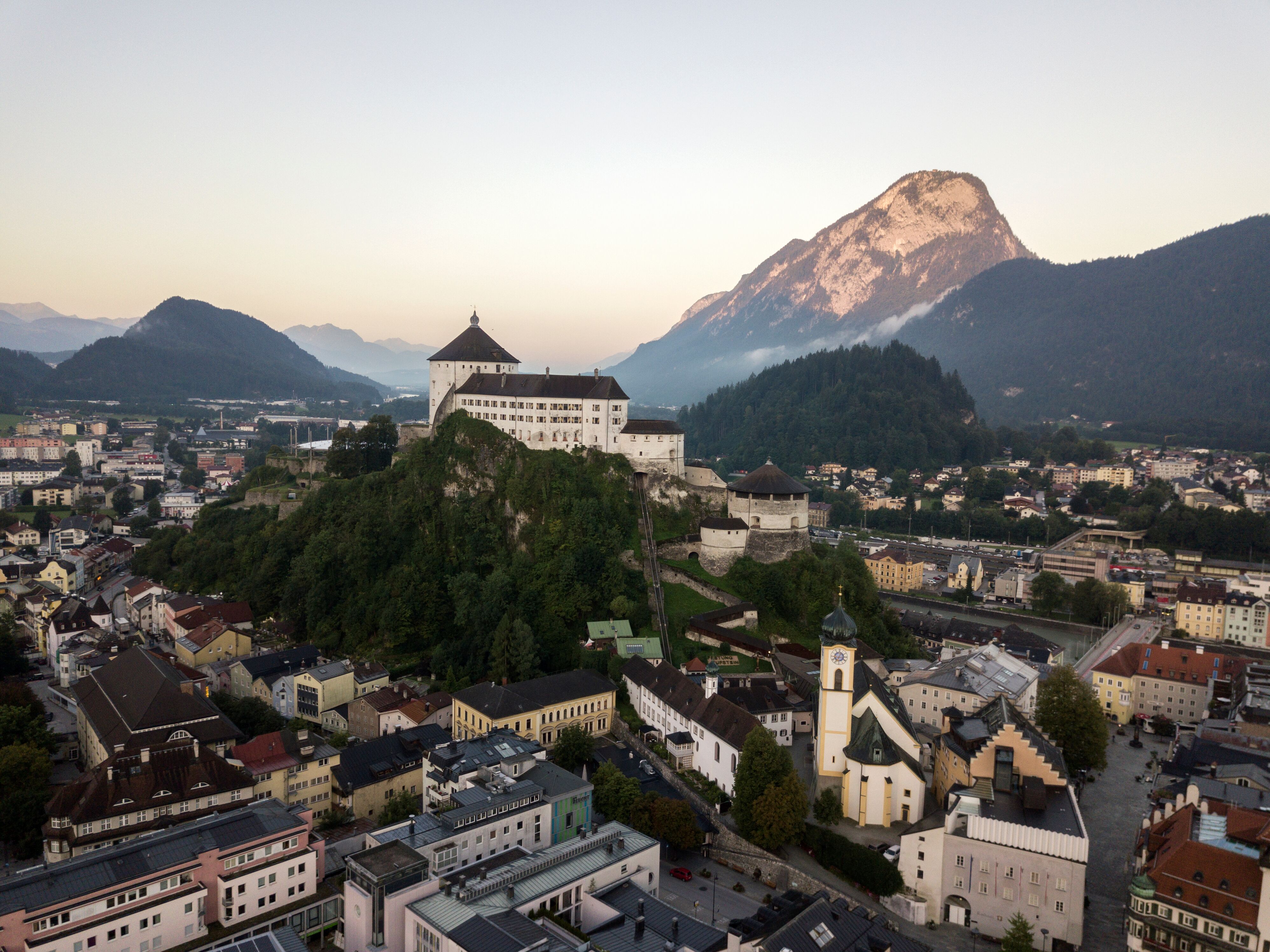
Kufstein is famous throughout Tirol thanks to a song known as the “Kufsteinlied” whose lyrics translate as follows:
„Do you know the pearl, The pearl of Tirol. The little town of Kufstein, You probably know it, Surrounded by mountains, So peaceful and quiet, |Yes, that's Kufstein There on the green Inn. :|“
With this famous ditty written by Karl Ganzer in your ears, our one-day journey of discovery through Tirol's second largest town begins. The first settlers came to the area around Kufstein 30,000 years ago. The town itself was fought over time and again: Habsburgs, Bavarians and Tiroleans repeatedly laid siege to the gates of the mighty Kufstein Fortress – with varying degrees of success.
It is also the fortress that greets you from afar. It has towered majestically over the town for centuries. What must it have been like all those years ago when knights and servants still lived within its walls and Emperor Maximilian I called for the fortress to be stormed?
Kufstein's important history is evident not only at the fortress. I discover historical artefacts in numerous corners of the town on this day. At the same time, Kufstein also offers space for modernity – often lovingly renovated and selected with a keen eye for detail, the old shines in new splendour in the town.
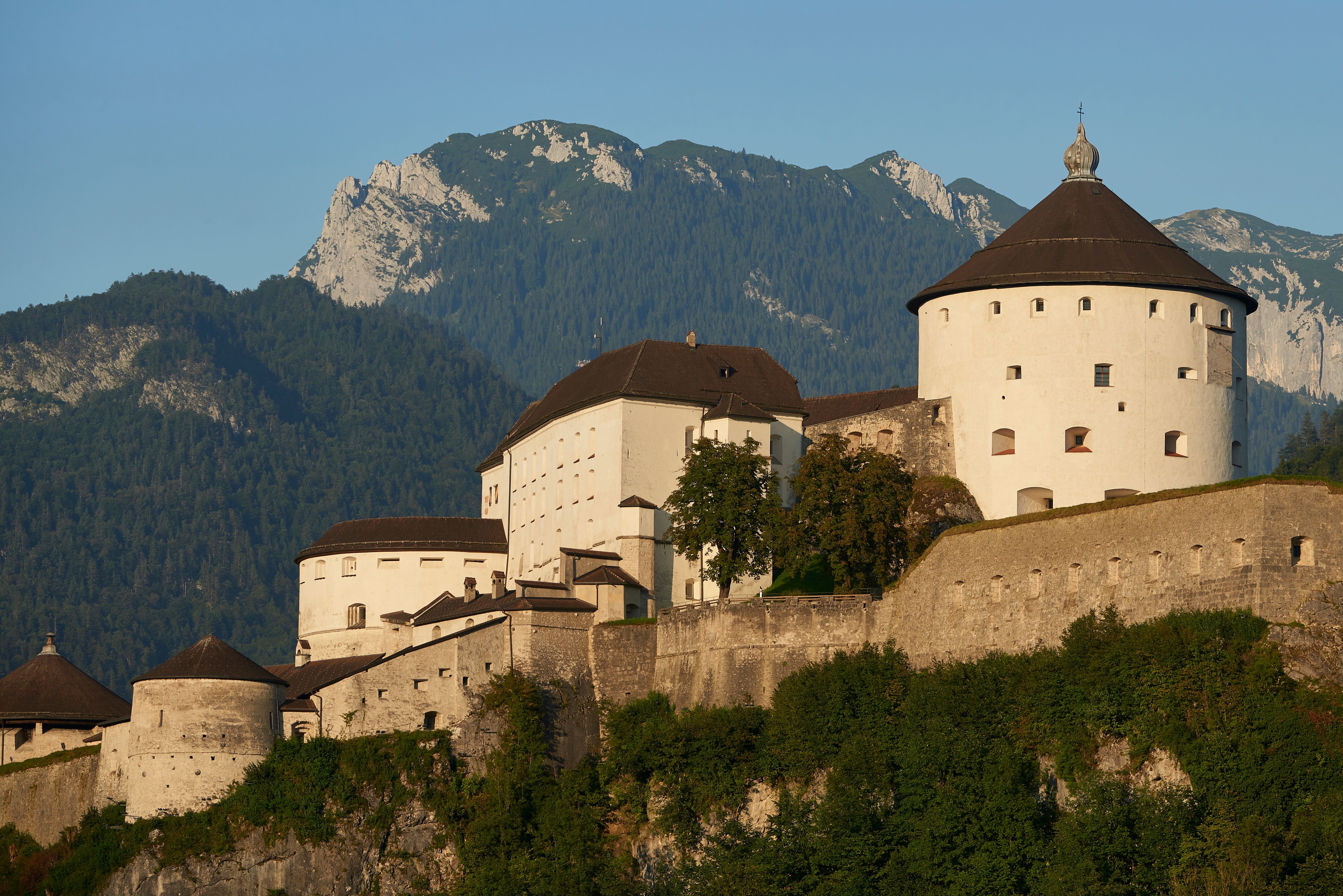
The Kultur Quartier Kufstein is a successful interplay of the old and the new. Where the Laadhaus used to stand five years ago – a striking building that housed a soap factory and the K&K Tabakhauptverlag publishing house, among other things – a modern meeting place has now been created. Today, guests of the Stadthotel ARTE sit in the historic square while enjoying breakfast in the neighbouring bar "Vitus und Urban". The hotel opened in 2016. The large breakfast buffet in the hip bar certainly whets the appetite. Fortunately, the buffet is also open to non-hotel guests.
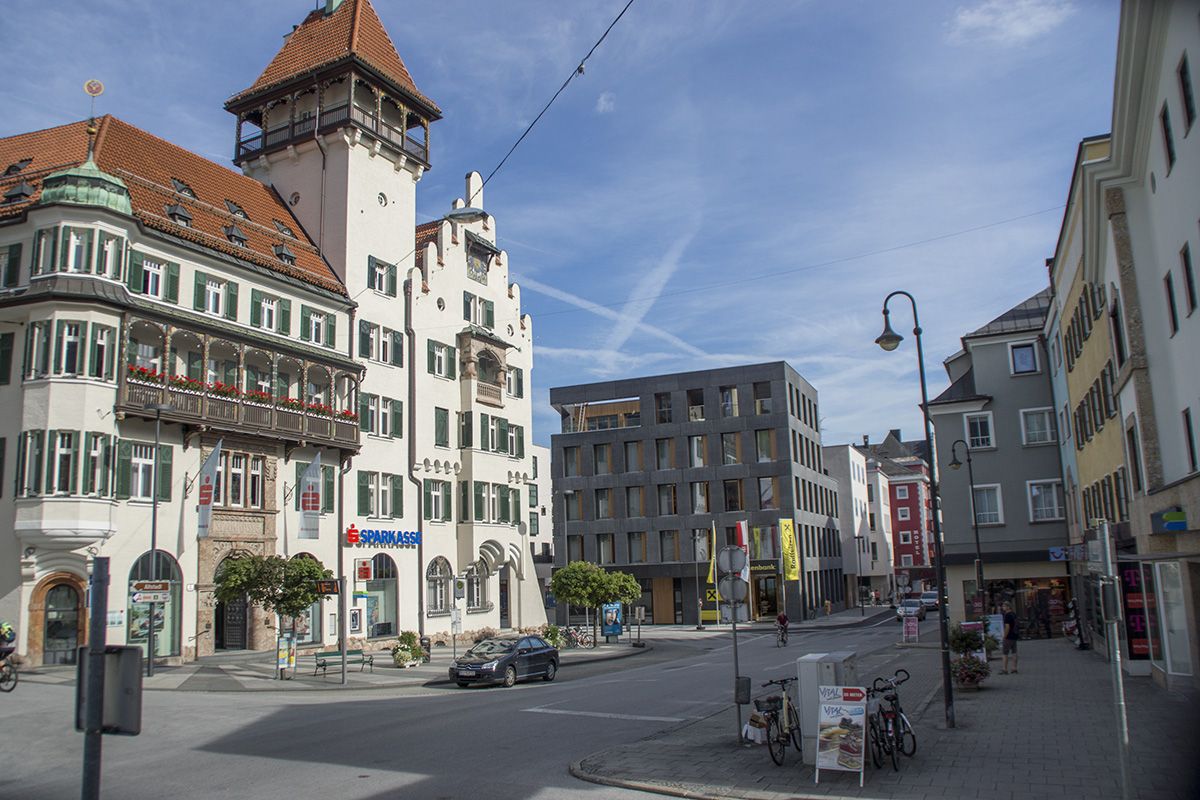
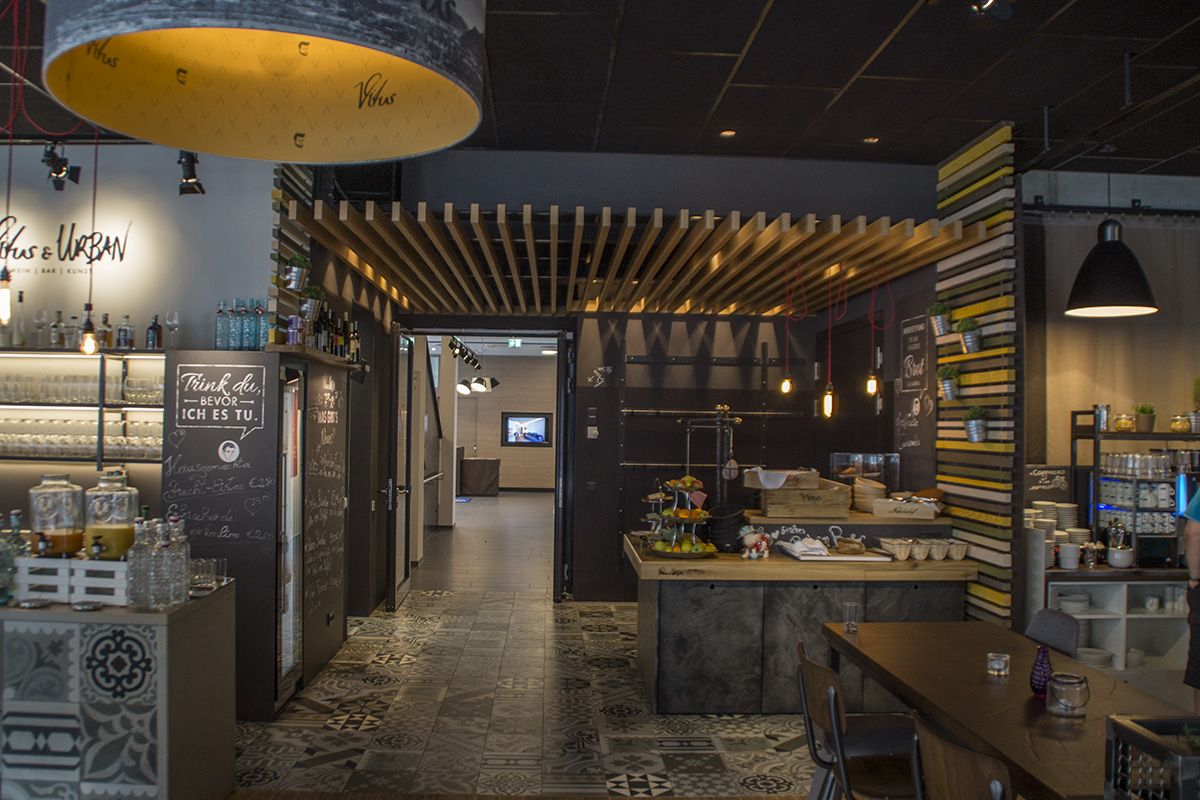
In addition to a hotel and bar, a bank branch, a perfumery and other commercial spaces, the Kultur Quartier on the Upper Town Squarez will in future also be home to the municipal theatre – a modern theatre building able to seat 175 guests.
Römerhofgasse is not far from the Kultur Quartier. The winding, small alleyway with cobblestones looks like something from the old days. The facades are adorned with paintings and colourful bay windows and artistically crafted signs indicate the nearest inn. In addition to kitsch and children's "dirndls", there is also the famous Auracher Löchl and the legendary Batzenhäusl Schicketanz. The following poem can be read on the wall of the Batzenhäusl, Kufstein's oldest wine house, which was built more than 530 years ago:
"What the tower is to Pisa, what the worm is to the fisherman, what lustre is to the gemstone, the Batzenhäusl Schicketanz is to Kufstein"
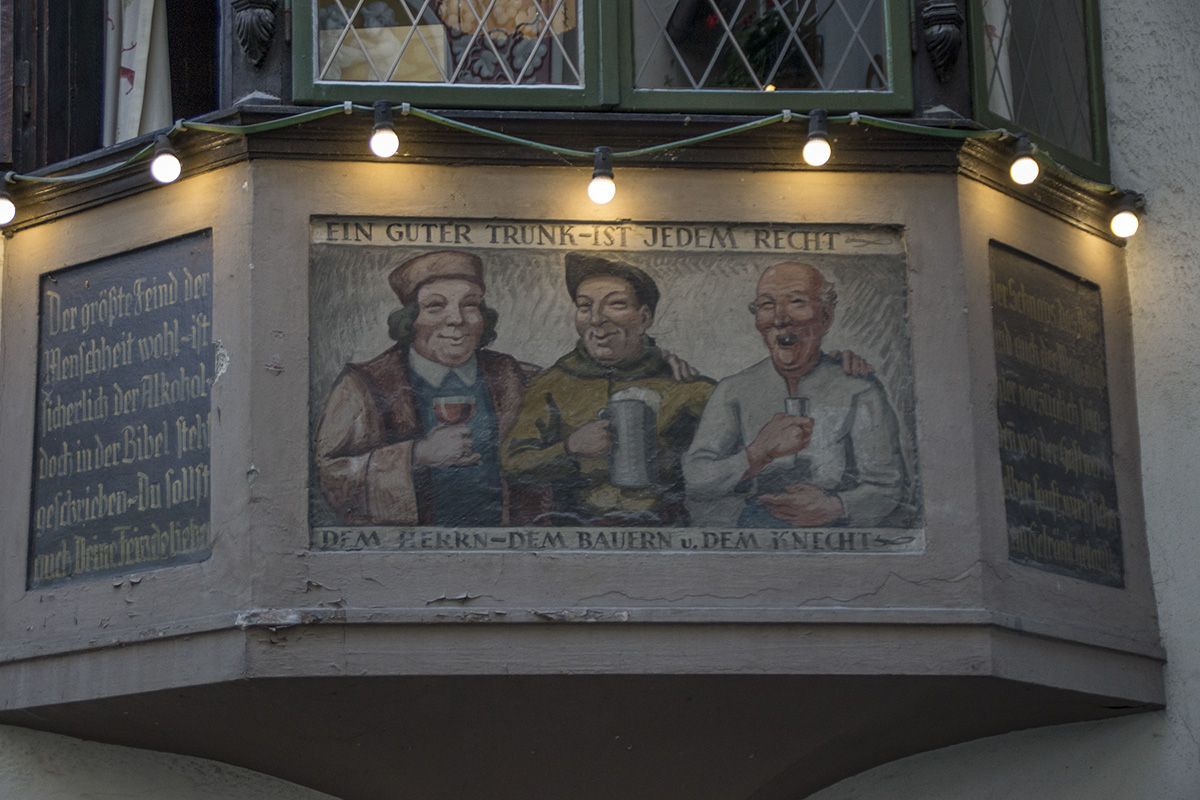
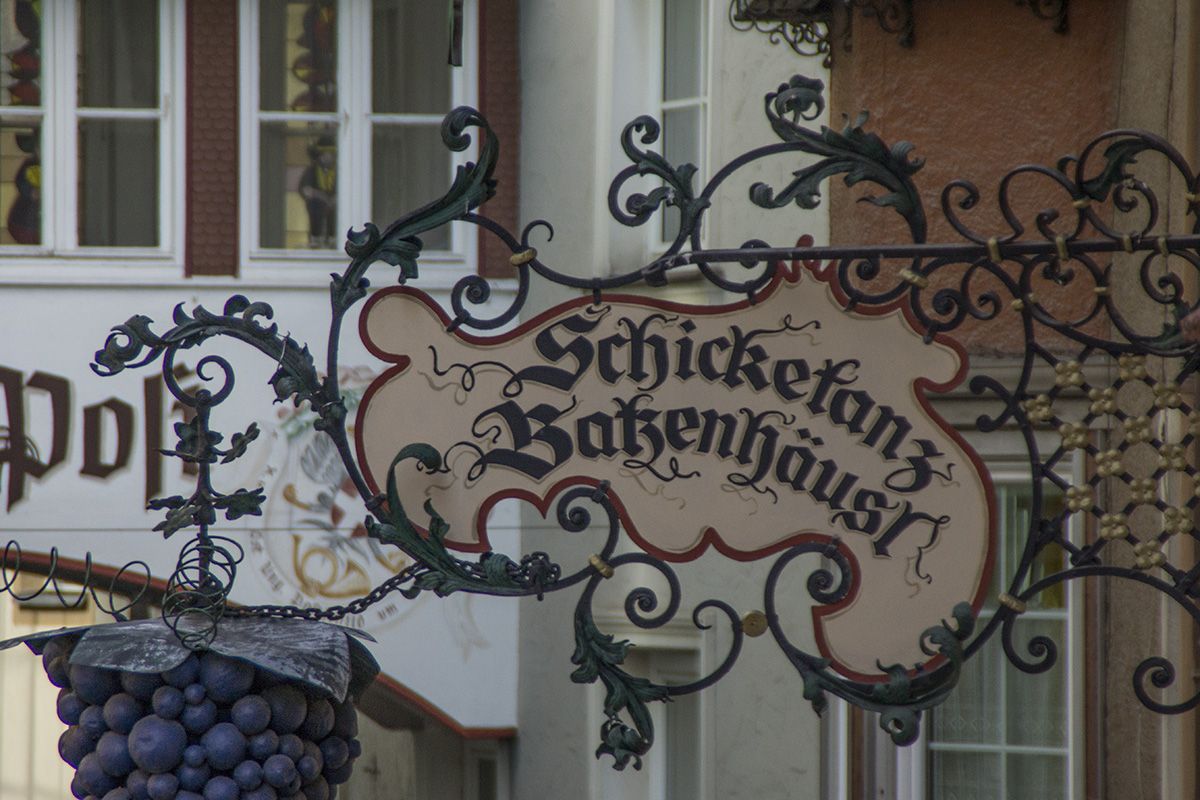
One inn further on, the Auracher Löchl restaurant (a traditional inn more than 600 years old) serves excellent Kasspatzln with crispy roasted onions. They taste particularly good in the rustic parlours with lots of dark wood. Incidentally, Karl Ganzer already appreciated the extraordinary atmosphere in the house. The composer of the famous “Kufsteinlied” song was a frequent guest at the Auracher Löchl and sang his most famous work here.
From one of the parlours you can even see into the gin bar below the Auracher Löchl, the "Stollen 1930". There are currently over 850 types of gin to choose from, with thw owner aiming to amass a total of 888 different bottles.
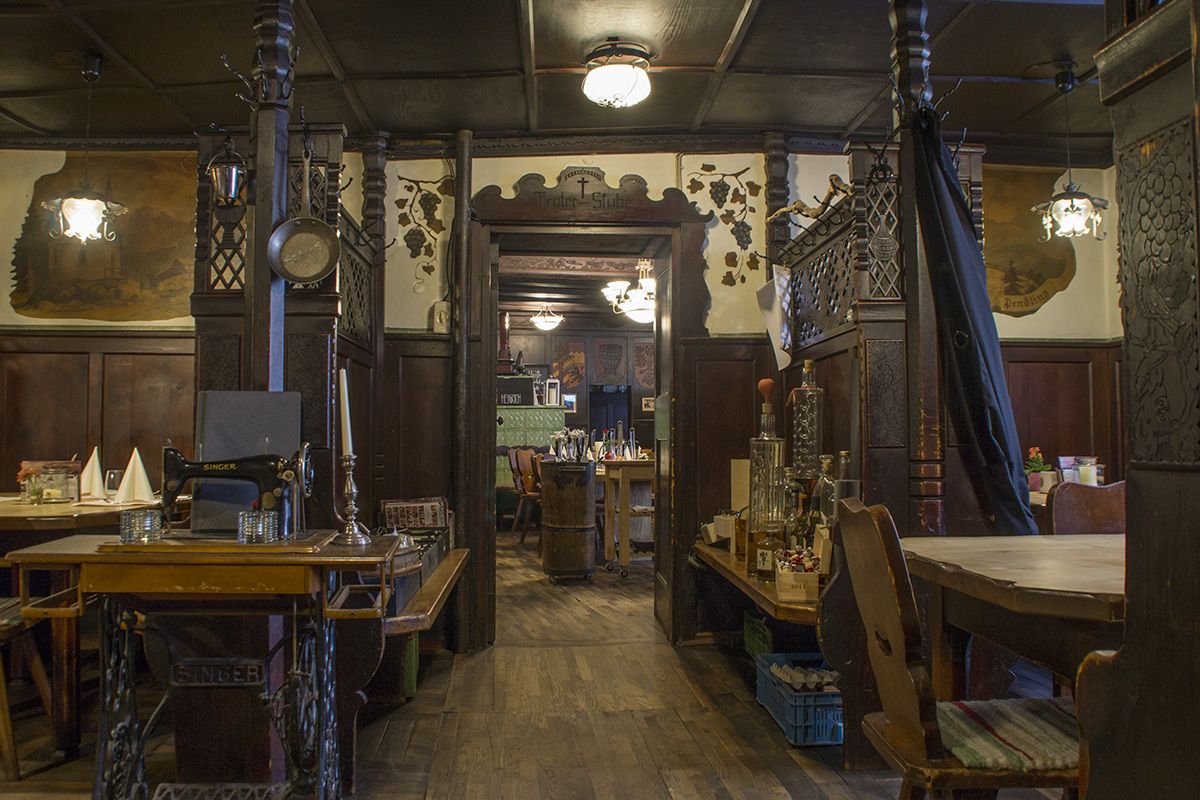

In addition to the traditional inn, Auracher Löchl has another special feature: a small bridge spanning the Römerhofgasse, from the Auracher Löchl inn to the Hotel Träumerei #8 (formerly Hotel Auracher Löchl). The smallest bridge restaurant in the world can be reserved for a romantic evening for two, including a 5-course menu. Perhaps even for a marriage proposal? "That happens very often," smiles a member of staff. "The bridge restaurant is almost always booked. You have to book it at least a month in advance."
A few metres from the Auracher Löchl is the Karl Ganzer Monument. In 1946, the self-taught musician composed the famous "Kufsteinlied" song and made the town known worldwide as the “Pearl of Tirol”. There are said to be more than 1,000 different versions of the song.
It's not far from Römerhofgasse to Kufstein Fortress. If you are there at lunchtime, don't miss the Heldenorgel concert. The world's largest open-air organ has been housed in the fortress's Bürgerturm tower since 1931.
Every day at 12 o'clock noon (in July and August also at 6 pm), Kufstein is filled with organ music from 4,948 pipes and 46 stops. The best listening experience is on the covered forecourt to the fortress. You can also watch the organist at work – and perhaps even request a piece of music. "I'm playing a special piece for the lady from Holland today," announces Hans Berger as he welcomes the audience. He has been taking turns playing the organ concert with his son Johannes and two other musicians since 2009. The extraordinary musical performance lasts 20 minutes and always ends with the piece "The Good Comrade".
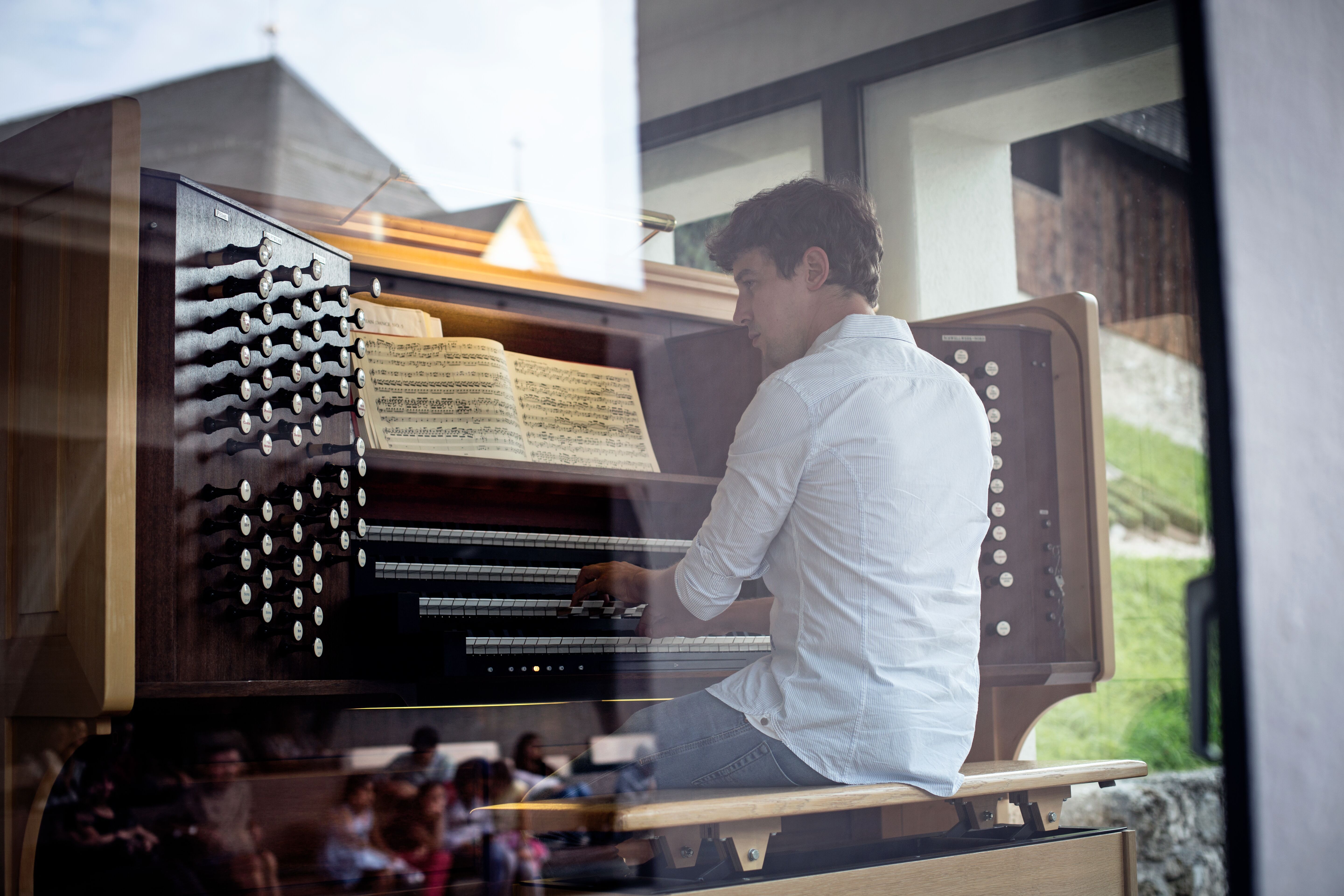
The glass lift then takes you up to the fortress. Today, Kufstein's landmark is easy to conquer, but at the beginning of the 16th century, Emperor Maximilian I had more difficulties. In 1504, the Habsburg ruler called for an assault on the fortress. In order for him to succeed, even the Emperor's two most powerful cannons, Purlepaus and Weckauf, had to be brought from Innsbruck to Kufstein on a raft. After the conquest, Maximilian had the castle expanded into a fortress.
Throughout history, the fortress was repeatedly the scene of sieges and battles and even served as a prison. Today, the once embattled stronghold is an exhibition space, museum and venue for concerts and theatre.
Riedel glasses are known far beyond the borders of Tirol. Handmade and mouth-blown, each piece stands for the highest quality. There is more than 2,000 years of history behind glassblowing. If you want to find out more about this ancient art, the production of Riedel glasses and the interplay between glass and wine, a visit to the glass manufactoryin Kufstein is a must.
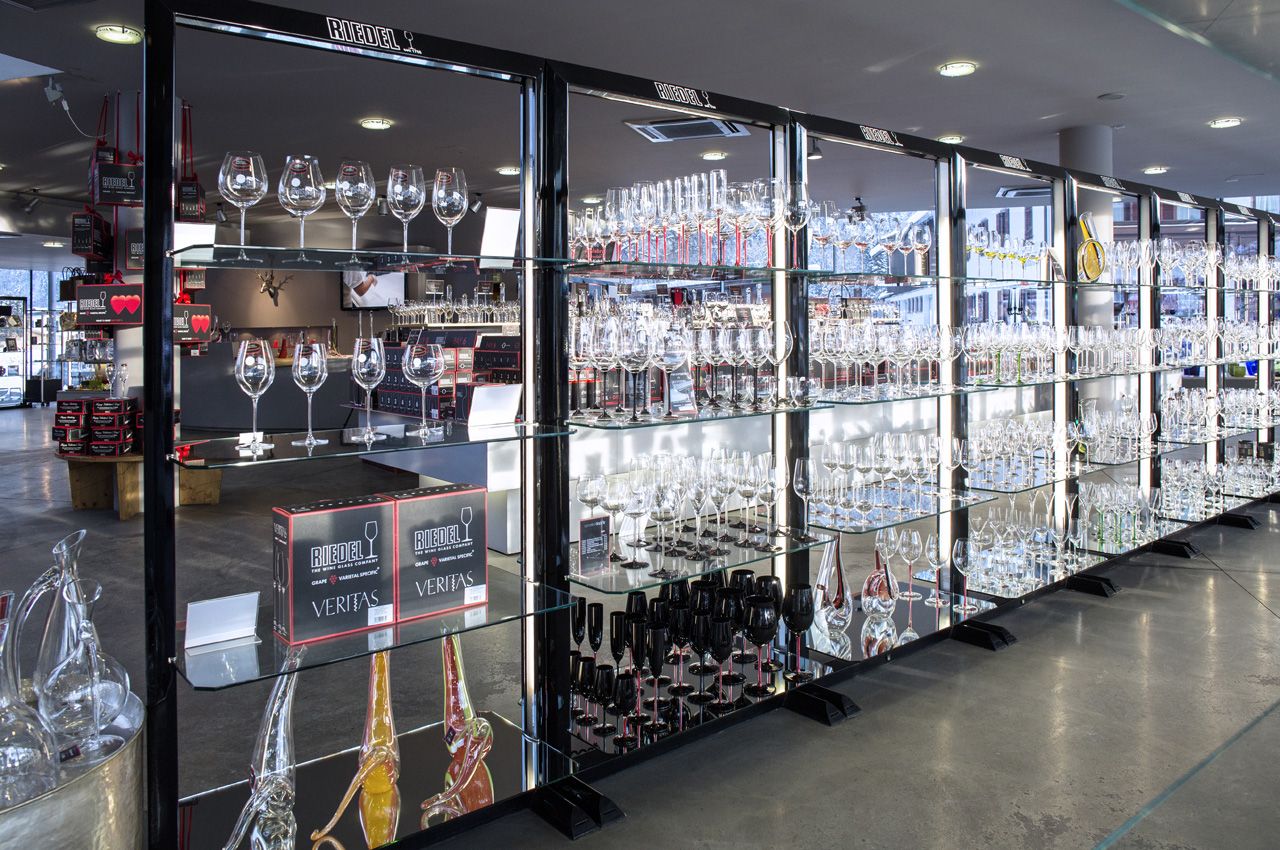
If you want to experience Kufstein from a different perspective, the Kaiserlift is the best option. A somewhat unusual but wonderfully relaxing ride on the chairlift to the Brentenjoch mountain station takes just under 25 minutes. When the Kaiserlift was modernised in 2015, a conscious decision was made to use single-person chairs to give people an opportunity to enjoy the ride in peace and quiet.
Once at the top of the mountain, everyone realises that Tirol did not get its nickname "Land in the Mountains" by chance. The panorama is breathtaking. On one side the Inn Valley with a view towards Germany, on the other the Kaiser Mountains tower into the sky. On a clear day you can even see the Hechtsee bathing lake just outside the town.
The Kaiser Mountains have been a nature reserve since 1963. The Kaiserlift gives quick and easy access, but the best way to discover nature here is on foot.
The Kaisertal Valley, the site of 30,000-year-old evidence of the region's earliest settlers, is also protected by law. For a long time it was the only inhabited valley in Austria without a road connection. A road into this charming idyll was not built until 2008 (via Ebbs, near Kufstein), with access restricted to authorised persons and residents. If you are travelling in the Kaisertal Valley then we recommend a stop at the Pfandlhof serving hearty food in a traditional setting.
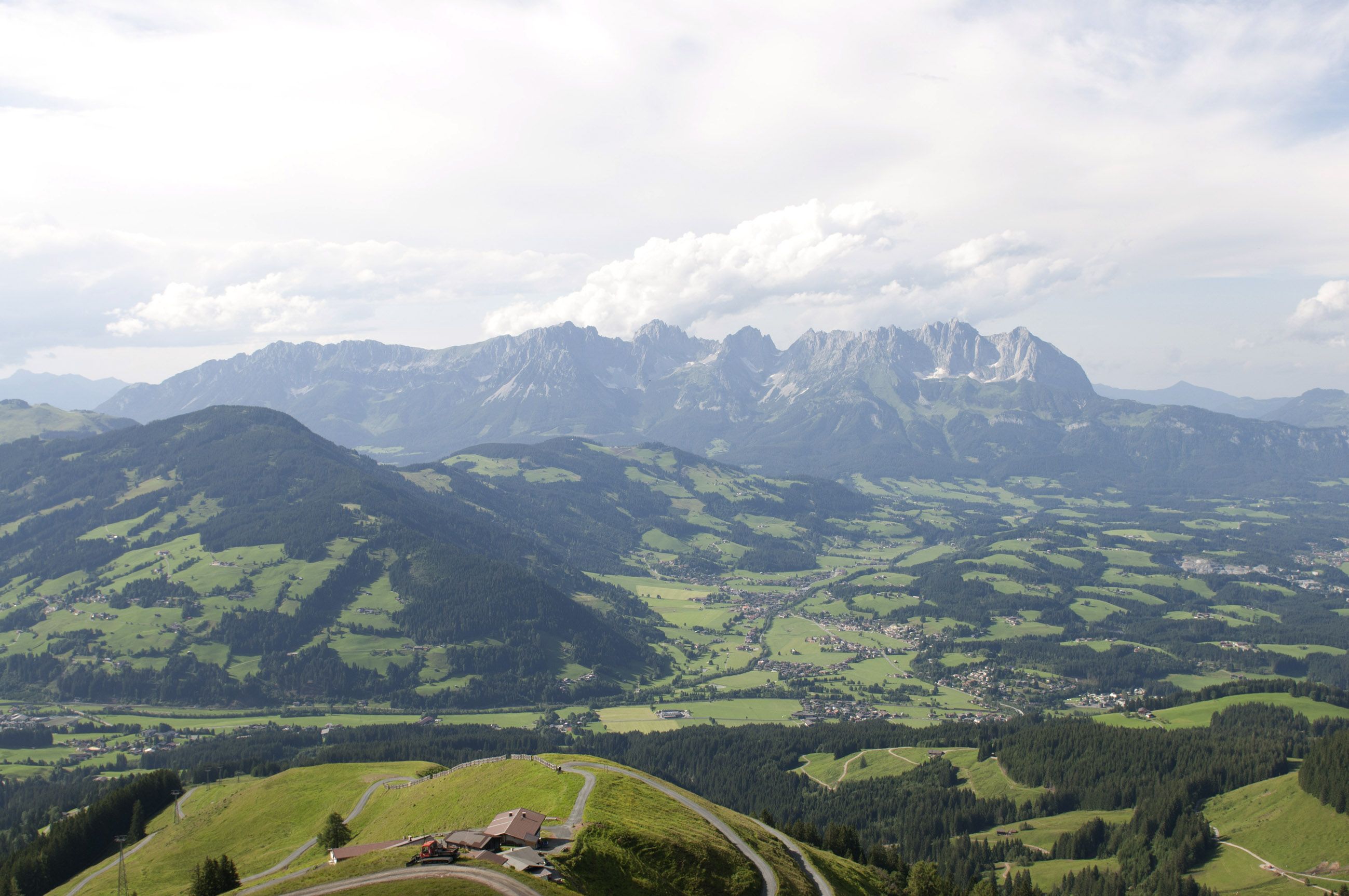
Just below the mountain station at 1200 metres I discover the Brentenjochalm. The many flowers around this rustic alpine hut and the natural backdrop make the view almost kitschy. Landlady Leni Kaindl, who has been running the Brentenjochalm for many years, serves a hearty snack of cheese and dried bacon. On Saturdays, Leni makes a selection of her favourite local dishes including “Zillertaler Krapfen”.
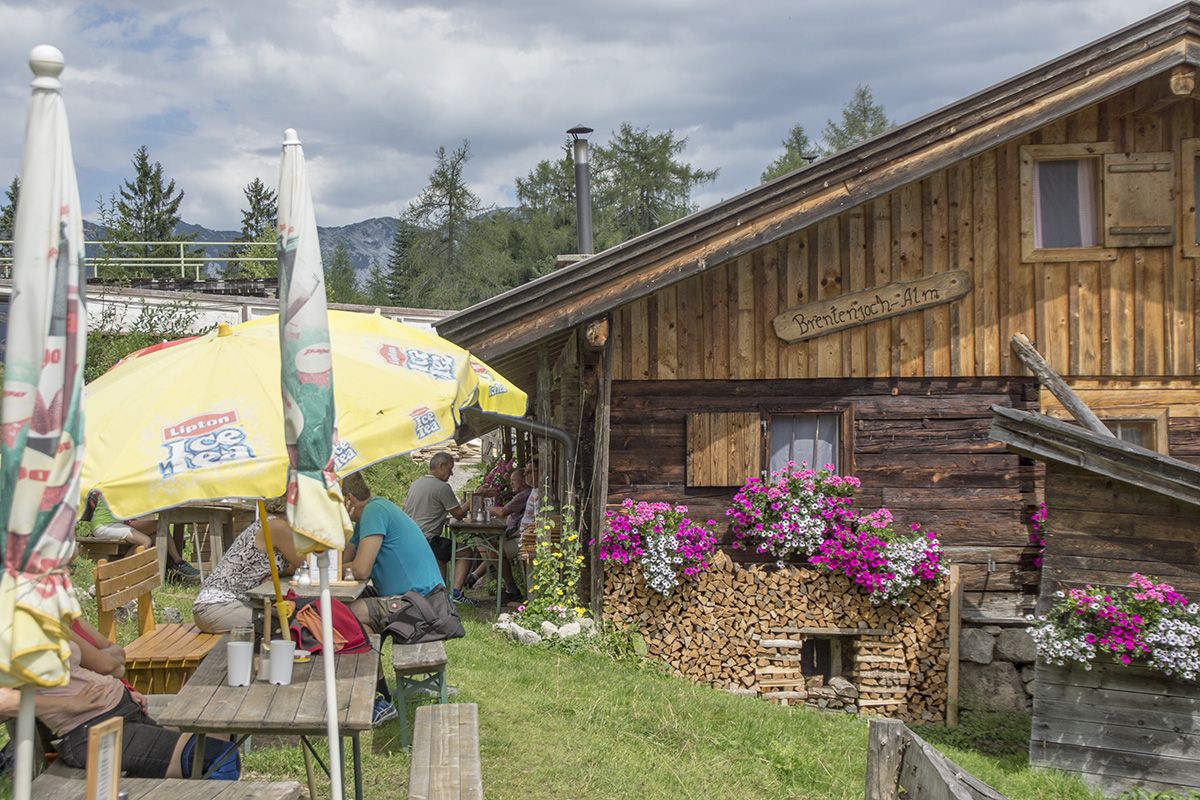
It is well worth exploring the area around Kufstein, from the Erl Passion Play Theatre (where the Tirolean Music Festival takes place every year) to the Blaue Quelle inn, also in the village of Erl.
